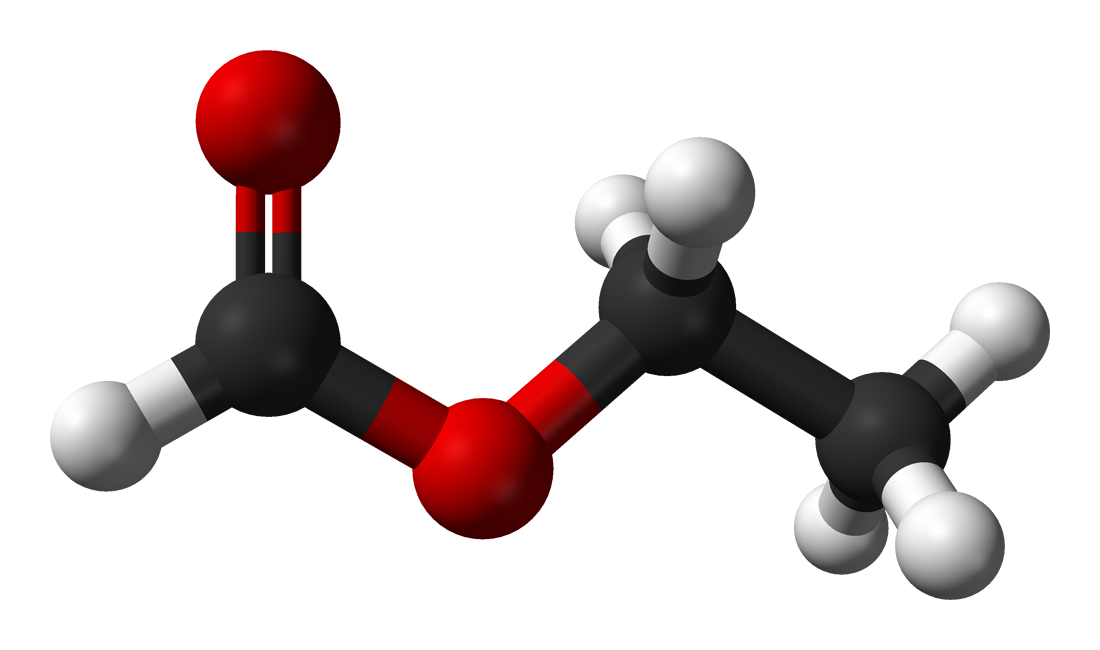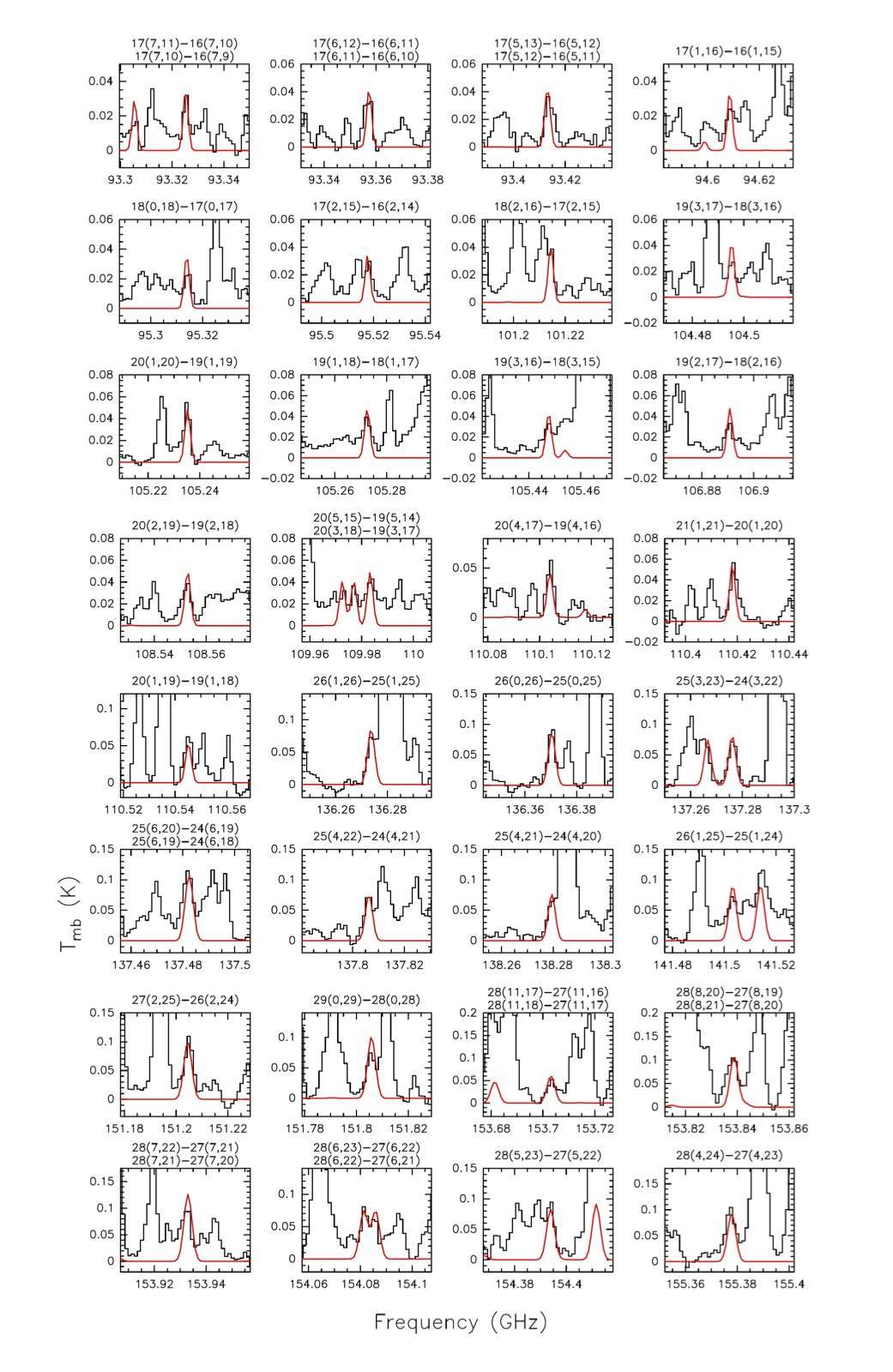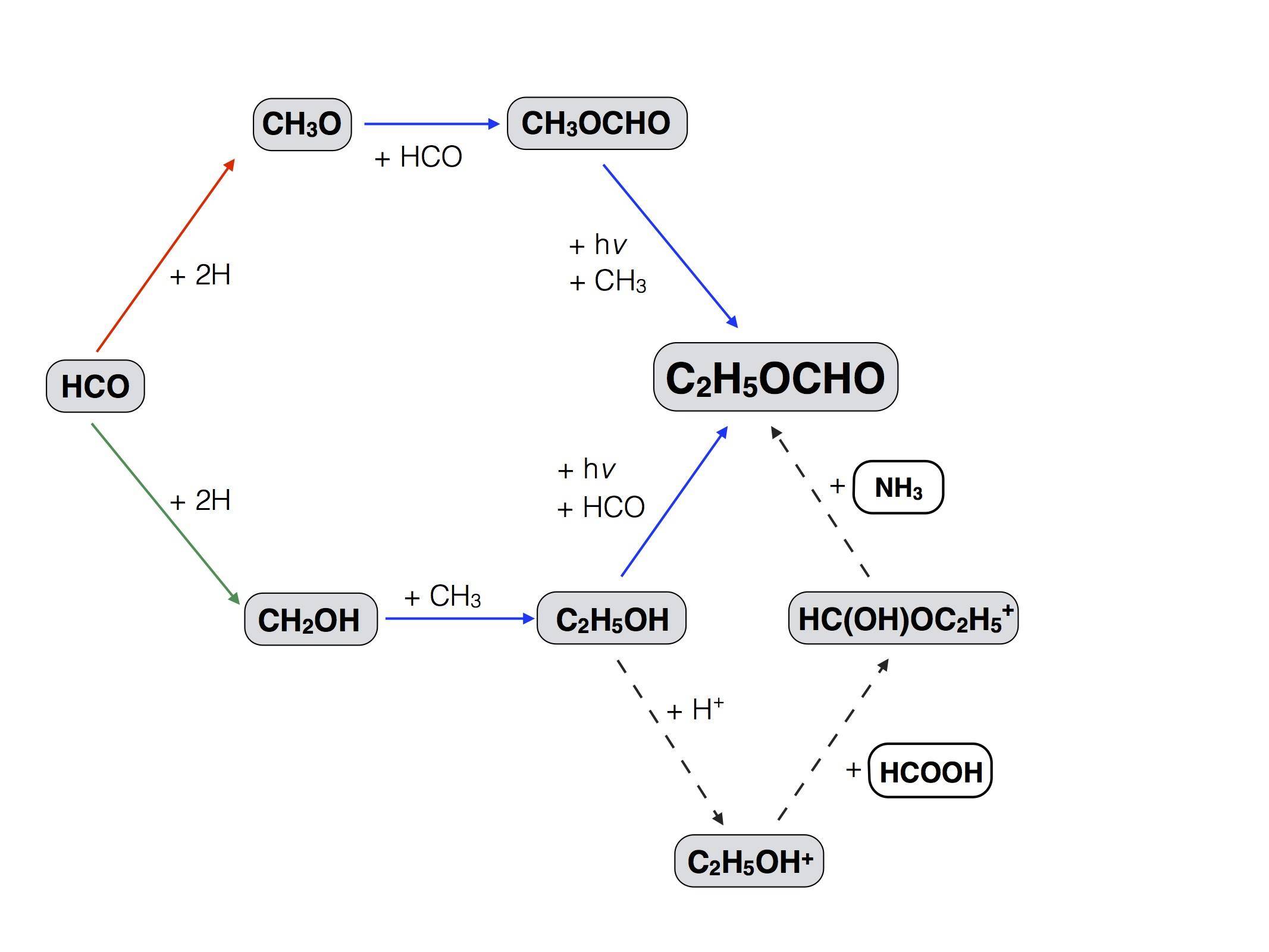On the chemical ladder of esters.
Detection and formation of ethyl formate in the cradle of prebiotic life.
In the last years, the detection of organic molecules with increasing complexity and potential biological relevance is opening the possibility to understand the formation of the building blocks of life in the interstellar medium. One of the families of molecules with substantial astrobiological interest are the esters, whose simplest member, methyl formate (CH3OCHO), is rather abundant in star-forming regions. The next step in the chemical complexity of esters is ethyl formate, CH3CH2OCHO (11 atoms!; see Fig. 1). Despite the increase in sensitivity of current telescopes, the detection of complex molecules with >10 atoms such as ethyl formate is still a challenge. Only two detections of this species have been reported so far, which strongly limits our understanding of how complex molecules are formed in the interstellar medium. New detections towards additional sources with a wide range of physical conditions are crucial to differentiate between competing chemical models based on dust grain surface and gas-phase chemistry.

Fig. 1: Ethyl formate, CH3CH2OCHO, one of the most complex molecules detected in space.
The Arcetri group, led by Victor M. Rivilla, has searched for ethyl formate towards the W51 e2 hot molecular core, one of the most chemically rich sources in the Galaxy and one of the most promising regions to study prebiotic chemistry, especially after the recent discovery of the P−O bond, key in the formation of DNA. They have analyzed a spectral line survey towards the W51 e2 hot molecular core, which covers 44 GHz in the 1, 2 and 3 mm bands, carried out with the IRAM 30m telescope.
They report the detection of the trans and gauche conformers of ethyl formate (see Fig. 2).

Fig. 2: Unblended or slightly blended transitions of the trans conformer of ethyl formate towards the W51 e2 hot core. We have overplotted in red the LTE synthetic spectrum obtained with the MADCUBAIJ software assuming a temperature of 78 K, a column density of 2×1016 cm−2 and a source size of 2.4 arcsec.
A Local Thermodynamic Equilibrium analysis indicates that the excitation temperature is 78±10 K and that the two conformers have similar column densities of (2.0±0.3)×10−16 cm−2 and an abundance of ∼10−8. They compare for the first time the observed molecular abundances of ethyl formate with different competing chemical models based on grain-surface and gas-phase chemistry (see Fig. 3). They propose that grain-surface chemistry may have a dominant role in the formation of ethyl formate (and other complex organic molecules) in hot molecular cores, rather than reactions in the gas phase.
Although the current data support grain-surface formation rather than gas-phase chemistry, it is clear that more detections of this molecule in a larger sample of astronomical sources, interferometric maps to better estimate the sizes of the emitting cores and thus the molecular abundances, and more laboratory experiments and theoretical models are needed to draw firm conclusions on the relative role of surface and gas-phase chemistry in the formation of ethyl formate and other chemically related complex organic molecules.

Fig. 3: Different formation routes of ethyl formate proposed by chemical models. Solid arrows indicate chemical reactions on grain surface, while dashed arrows correspond to gas-phase reactions.
Reference: "On the chemical ladder of esters. Detection and formation of ethyl formate in the W51 e2 hot molecular core", 2016, accepted in A&A; V. M. Rivilla, M. T. Beltrán, J. Martín-Pintado, F. Fontani, P. Caselli, R. Cesaroni; https://arxiv.org/abs/1611.00719



